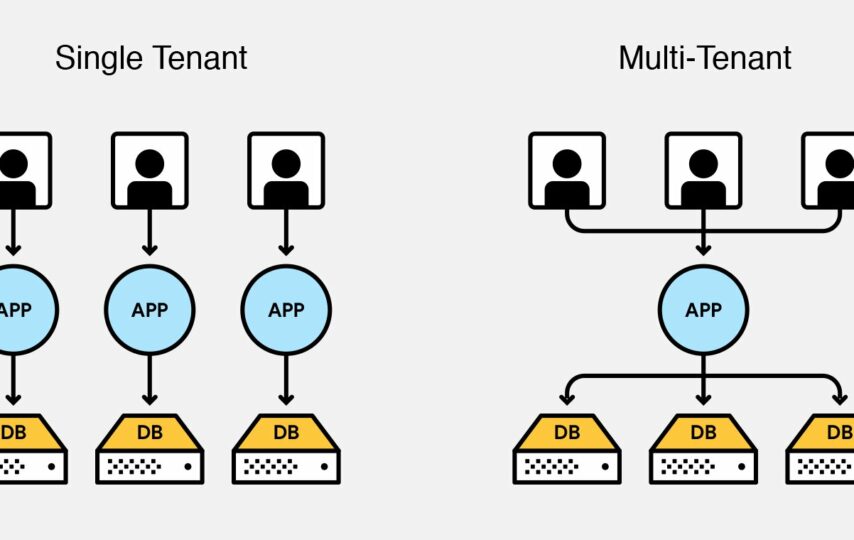Definition of Multitenancy
Multitenancy, often referred to as multi-tenant design, represents a software structure in which one version of software, paired with its associated database, serves multiple users or “tenants”. Here, a “tenant” can be an individual or, more typically, a collective group, such as companies, using identical computing resources of a particular software. This design is a hallmark of Software as a Service (SaaS) offerings. Despite the shared database environment, each tenant’s data is secured, segregated, and systematically organized to prevent cross-tenant access.
Multi-tenancy and cloud computing
It’s important to distinguish between multitenancy and cloud computing, even though they are often intertwined. While the multitenant design can be hosted on traditional servers or cloud platforms, the latter brings the benefits of unlimited access to computing resources and increased operational efficiency.
SaaS and Multi-tenancy
Prominent SaaS platforms that demonstrate multitenancy include
- Google Workspace
- Salesforce
- Dropbox
- Atlassian
- Adobe
- Netflix
- Slack
- Recostream
- Zoom
- Oracle
These platforms provide data integrity and separation. Without multitenancy, each client would require an individual server and exclusive database, increasing resource consumption.
Database structures in multi-tenancy
There are three dominant strategies for handling data in a multitenant environment:
- Shared database strategy: Spreads user data across multiple databases, or “shards,” and restricts a particular tenant’s data to a single shard.
- Schema-per-tenant approach: Within a single database, multiple schemas are created to provide a degree of data segregation. Each schema acts as a separate segment.
- Database-per-tenant approach: Each tenant has its own exclusive database. Each new tenant creates a new database.
Compare single-tenant and multi-tenant designs
The key difference between these structures is the way the software is delivered to clients. In a multi-tenant design, a single software version serves multiple clients, all accessing a single application, but with data isolation. In contrast, single-tenant designs assign a unique software version and database to each client.
Benefits of the multi-tenant model
- Economic and time gains: Consolidated software and database reduce development and maintenance costs.
- Maximize efficiency: Superior utilization of IT resources.
- Enhanced Performance: Streamline data handling and operations.
- Simplified database handling: Systematically organize data at scale.
- User Ease: Free users from tasks such as maintenance, software upgrades, or data governance.
Final Thoughts
In summary, multi-tenancy is a fundamental pillar of modern software development, especially for every SaaS company. It champions adaptability, efficiency, and cost savings, making it a top choice for numerous organizations. For SaaS platforms, adopting a multi-tenant model is a tactical decision that allows them to efficiently serve a broad customer base while securing a competitive edge. This model’s ability to quickly adapt and innovate, while maintaining privacy, makes multitenancy a keystone to the triumph of countless SaaS ventures.







